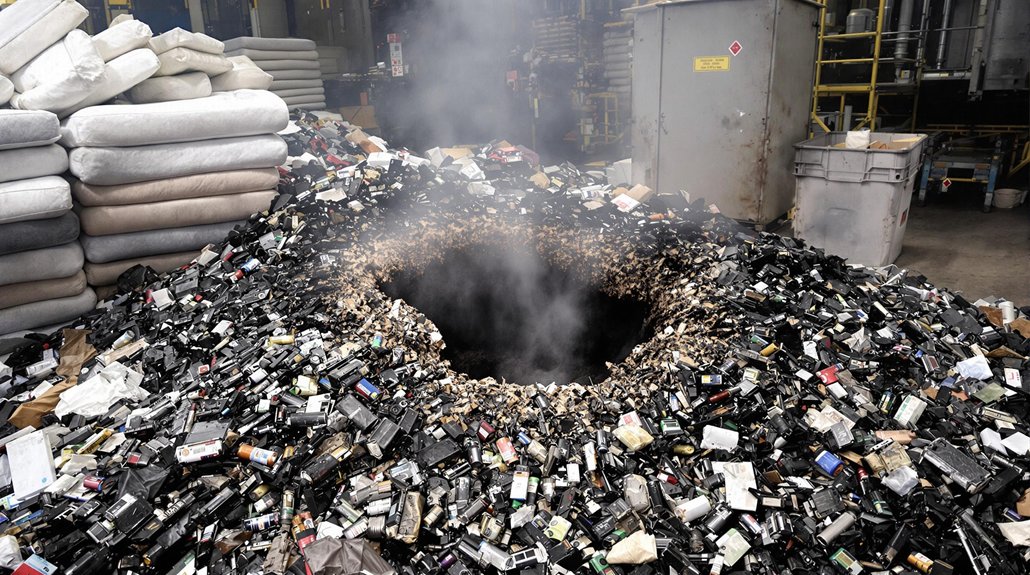While lithium-ion batteries power everything from smartphones to electric vehicles, their widespread adoption brings considerable safety concerns that cannot be overlooked. The Camden fire incident exemplifies how these energy storage devices, despite their efficiency, harbor potential dangers when subjected to adverse conditions. Thermal runaway, a chemical chain reaction that accelerates uncontrollably, transforms these compact power sources into intense fire hazards capable of reaching temperatures exceeding 1000°F.
Thermal runaway transforms lithium-ion batteries from efficient power sources into uncontrollable fire hazards exceeding 1000°F.
What makes these battery failures particularly treacherous is their tendency to emit toxic, flammable gases before visible signs of danger appear. The telltale hissing sound, often dismissed by unsuspecting users, signals imminent gas venting—a vital warning that demands immediate attention. These emissions contain volatile compounds that, when concentrated in enclosed spaces like aircraft cabins or vehicles, create both respiratory hazards and explosion risks.
The chemical composition of lithium-ion cells presents additional complications. Their electrolytes, highly reactive when exposed to air, can ignite spontaneously upon battery rupture. I’ve examined numerous cases where seemingly minor physical damage led to catastrophic failures hours or even days later. This delayed reaction pattern makes proper risk assessment especially challenging for travelers and emergency personnel alike.
Perhaps most concerning is the persistent danger after initial fire suppression. Unlike conventional fires, extinguished lithium-ion batteries can reignite repeatedly without warning. This phenomenon, known as stranded energy release, has confounded firefighting efforts worldwide and necessitates specialized protocols for damaged devices. Establishing proper safety zones around compromised batteries is crucial to minimize exposure to potential hazards during emergency response.
For travelers, understanding these risks is essential. Carrying damaged batteries, charging devices unattended, or exceeding manufacturer specifications considerably increases failure probability. The characteristic swelling, excessive heat generation, or unusual odors demand immediate isolation of the device in question. Always charge your devices away from combustible materials to reduce the risk of fire spread during potential thermal events.
Transportation safety agencies have implemented increasingly stringent regulations, but individual vigilance remains vital. Proper storage in carry-on luggage (never in checked baggage), use of certified charging equipment, and prompt response to warning signs constitute the traveler’s best defense against these powerful but potentially perilous power sources.









